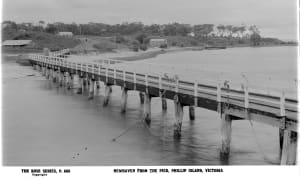
The new Cowes Cultural Centre will be built to best practice environmental standards, providing a case study for other buildings said Bass Coast Shire Council.
The latest installment of Planning: our future, looks at how Phillip Island can build to help – not harm – the environment.
According to the Gippsland Climate Projections report, coastline levels rose at an average rate of 2.1mm/yr between 1966 and 2009, and are expected to continue rising through the 21st century.
By the 2030s, increases in daily maximum temperature of 0.9C to 1.8C (since the 1990s) are expected, rainfall in the long-term is expected to decline, while dramatic bushfire events are likely to occur more frequently and with greater severity.
So how should we plan for these outcomes, while reducing carbon emissions? Here are just a few examples of how individuals, groups and the shire are leading the way.
BUILDING
Love it or hate it, the new Cowes Cultural Centre will apparently be built to best practice environmental standards, providing a case study for other buildings.
According to Bass Coast Shire the upfront $28 million cost of the building was higher in order to meet Passive Haus certification, “but this will reduce the ongoing cost of running the building as the building will perform better”.
Once built, it will be designed to take advantage of the sun and airflow for heat recovery and exchange, while building materials will seal and hold spaces at ambient temperatures.
As a result, the centre will save about 150 tonnes of carbon emissions each year, or up to 70 per cent of standard energy use.
It will use solar energy, low carbon renewable timber and water saving fittings throughout, while the building itself has been designed to ensure surrounding trees are not cut down.
Read more:





